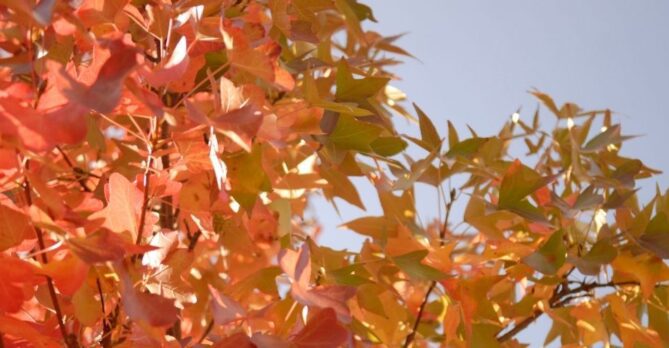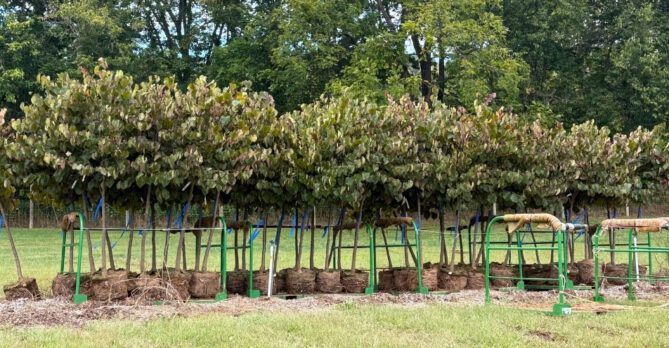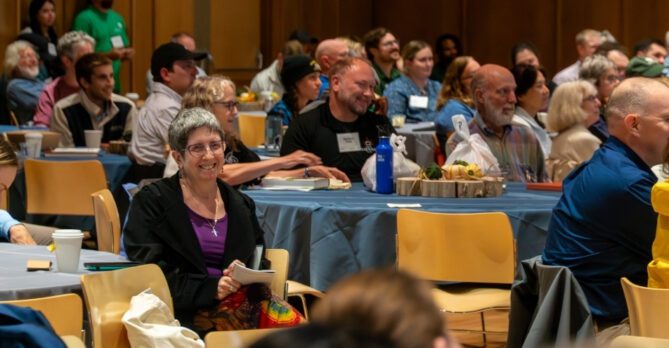
February may be the shortest month, but our Science and Policy team was busy! Overall, we attended six Performance and Oversight Hearings at various District agencies to be sure trees get the investment they need to live long and healthy lives. We advocated for numerous things, but our testimony focused on four main pillars: encouraging agencies to work more closely together, pushing for transparency in decision making, adding incentives to saving Special Trees with a credit program, and asking for more thoughtful, useful landscape design and additional landscape architects at District agencies and their sites. A special thank you to the 17 (!) Certified Tree Advocates that submitted testimony advocating for urban trees.
We spent our Valentine’s Day with Councilmember Mary Cheh and the Committee on Transportation & the Environment at a Performance & Oversight Hearing for the Department of Energy and the Environment (DOEE). We proposed creating a credit or monetary savings program for developers who will work to protect Special Trees (those 14’’-31’’ in diameter) so they have the opportunity to grow into expansive Heritage trees that will provide millions of dollars per year in long term economic, social, and environmental benefits. We also urged DOEE to be more transparent when reviewing development projects so others can be sure plans are approved consistently.
Up next was our testimony at the Performance and Oversight Hearing for D.C. Parks and Recreation (DPR) before the D.C. Council Committee on Recreation and Youth Affairs. We commended their work utilizing their recreation centers and parks as platforms to educate communities on the value of their local environment. As part of our partnership with DPR we work closely with them, and not just in tree planting! We asked that DPR not only collaborate with DOEE to implement best management practices for green infrastructure – rain gardens, pollinator habitats, etc – so the city can meet its environmental goals. In order to meet these requirements, we suggested DPR at least double the number of landscape architects they have on staff so there is an adequate number of subject matter experts.
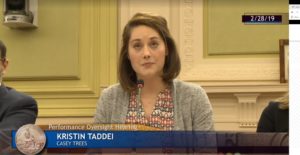 As the resident urban planners of the city, the Office of Planning is reliable in creating and protecting our parks and open spaces. At the Performance and Oversight Hearing for the D.C. Office of Planning before the D.C. Council Committee of the Whole, we urged them to continue prioritizing Small Area Plans – think triangle parks – because we believe every action can make an impact. We also encouraged them to maintain consistency between the District’s Comprehensive Plan and the Federal comprehensive plan to make sure both plans would cover forested natural areas, strategic tree planting for stream restoration, utilizing conservation easements, creating beneficial local partnerships, and more. Considering all the greenspace in D.C. that is owned by the Federal government, all land should be treated equally.
As the resident urban planners of the city, the Office of Planning is reliable in creating and protecting our parks and open spaces. At the Performance and Oversight Hearing for the D.C. Office of Planning before the D.C. Council Committee of the Whole, we urged them to continue prioritizing Small Area Plans – think triangle parks – because we believe every action can make an impact. We also encouraged them to maintain consistency between the District’s Comprehensive Plan and the Federal comprehensive plan to make sure both plans would cover forested natural areas, strategic tree planting for stream restoration, utilizing conservation easements, creating beneficial local partnerships, and more. Considering all the greenspace in D.C. that is owned by the Federal government, all land should be treated equally.
Our second to last testimony was at the Performance and Oversight Hearing for the D.C. Department of General Service (DGS) before the D.C. Council Committee on Facilities and Procurement. Considering the number of facilities overseen by DGS, our testimony focused on their need to deliberately keep the outside environment in mind when planning, modernizing, and building recreation projects. We asked them to collaborate with DOEE on best management practices for landscape designs solutions, biophilic design, pollinator habitats, green corridors, and green infrastructure. Think of playgrounds that are too hot to play on in the summer – planting and caring for appropriate trees would help solve that issue!
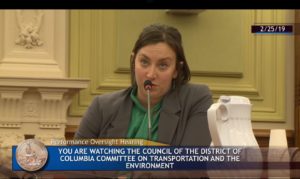
Last but not least was our testimony at the Performance and Oversight Hearing for the D.C. Department of Transportation (DDOT) before the D.C. Council Committee on Transportation and the Environment. Before we dove into our suggestions, we had to thank the hard work of DDOT. Working with DDOT on pruning, planting and citizen science programs is critically beneficial to the city. While planting trees is important, maintaining them is almost more important. Therefore, we asked DDOT (and any other relevant agency really) to meet and create a tree flow chart based on parcel type to make it clear what agencies are responsible for the maintenance and long-term ownership of different types of trees.
You too could advocate for District trees in front of the Council (or others) when you become an advocate with Casey Trees!
